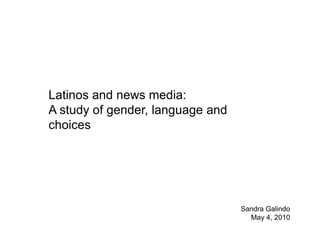Report
Share

Recommended
Recommended
More Related Content
Featured
Featured (20)
Product Design Trends in 2024 | Teenage Engineerings

Product Design Trends in 2024 | Teenage Engineerings
How Race, Age and Gender Shape Attitudes Towards Mental Health

How Race, Age and Gender Shape Attitudes Towards Mental Health
AI Trends in Creative Operations 2024 by Artwork Flow.pdf

AI Trends in Creative Operations 2024 by Artwork Flow.pdf
Content Methodology: A Best Practices Report (Webinar)

Content Methodology: A Best Practices Report (Webinar)
How to Prepare For a Successful Job Search for 2024

How to Prepare For a Successful Job Search for 2024
Social Media Marketing Trends 2024 // The Global Indie Insights

Social Media Marketing Trends 2024 // The Global Indie Insights
Trends In Paid Search: Navigating The Digital Landscape In 2024

Trends In Paid Search: Navigating The Digital Landscape In 2024
5 Public speaking tips from TED - Visualized summary

5 Public speaking tips from TED - Visualized summary
Google's Just Not That Into You: Understanding Core Updates & Search Intent

Google's Just Not That Into You: Understanding Core Updates & Search Intent
The six step guide to practical project management

The six step guide to practical project management
Beginners Guide to TikTok for Search - Rachel Pearson - We are Tilt __ Bright...

Beginners Guide to TikTok for Search - Rachel Pearson - We are Tilt __ Bright...
Latinos and news media: A study of gender, language and choices
- 1. Latinos and news media: A study of gender, language and choices Sandra Galindo May 4, 2010
- 2. Background and purpose El Misisipi (1808) first Spanish-language newspaper in the U.S. Spanish-language radio started during the 1920s Spanish-language television started in San Antonio, Texas in1955 To examine how Latino men and women get informed and in what language.
- 3. Literature Who watched Spanish language TV(Hale et al, 2009) Technology access differences among immigrants and older generations of Latinos (Spence & Straubhaar,2008) More research needed (Hale et al,2009 ;Ksiazek and Webster (2007)
- 4. Research questions Is there a difference between Latino men and women and the way how they stay informed? Is there a difference between how close Latinos followed the 2004 presidential campaign on TV and their language of preference? Is there a difference in observed and expected frequencies for men and women and how informative the various news media outlets are?
- 5. Method and sample Independent t-test National sample of Latinos Survey done by phone One Way Analysis of variance (ANOVA) Total sample: 1316 Men: 657 Women: 659 Chi Square Power: .80 α= .05 Effect size = .2
- 6. Independent t-test t (1314)= -2.736, p= .006 Men (n=657, M=1.70, SD=0.696) Effect size d=0.490 Women (n=659, M=1.81, SD= 0.704) N= 1316 95% confidence interval (C95) -0.106≤µ≤0.039
- 7. p d Language 95%Confidence Interval 0.949 p < .001 -0.79 ≤µ≤ -0.45 English/Spanish -0.40 ≤µ≤ -0.07 English/Both p < .001 0.960 Spanish/Both 0.896 p < .001 0.22 ≤µ≤ 0.55 ANOVA English (n=379, M=1.88, SD= 0.940) Spanish (n=384, M=2.50, SD=1.007) Both (n=394, M=2.12, SD=0.999) N= 1157 Bonferroni α= .0167 (F(2,1154)=39.876, p<.001)
- 8. Chi Square χ2 (4) = 38.929, p < .001 Network TV (n=379, M=1.88) Local TV (n=379, M=1.88) Newspaper (n=379, M=1.88) Radio (n=379, M=1.88) Internet (n=379, M=1.88) N= 1276 O= Observed E= Expected RR (Risk Ratio) RRLatinas/N.TV=1.222 RRLatinas/L.TV=1.277 RRLatinos/Newspaper=1.675 RRLatinos/Radio=1.290 RRLatinos/Internet=1.296 O O O O E E E E E
- 9. Conclusions and Recommendations Women are more informed than men Spanish and both languages are preferred Women prefer TV and Men newspaper, radio and internet More research about Latinos and Spanish language media. More research about different Latino subgroups and Spanish language media.